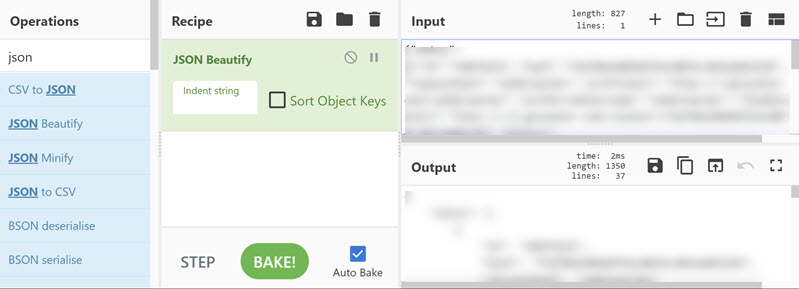
JSON and Common Web Encodings Demystified
Using CyberChef web site to convert JSON, URL encoding, percent encoding, Base64 encoding, and UNIX time into other formats for OSINT. Continue reading JSON and Common Web Encodings Demystified

Using CyberChef web site to convert JSON, URL encoding, percent encoding, Base64 encoding, and UNIX time into other formats for OSINT. Continue reading JSON and Common Web Encodings Demystified

In July 2019 Twitter had some updates to their interface, search-URLs and overall user-experience. They changed a lot of things in the background which made the user-experience for researchers less useful. Actually a tweet thread started by @thegrugq inspired me to write this blog. With this blog you can take a few basic steps to bring back the user experience of “the old” Twitter like … Continue reading Muting the Twitter algorithm and using basic search operators for better OSINT research

How to search effectively and efficiently. Basic principles, tips and tricks for OSINT. Continue reading How to search effectively and efficiently – Part I: basic principles, tips and tricks for OSINT

The tool cURL is already over twenty years old, but it remains one of the most used tools by people, especially the ones working in the IT Security branch. It is used directly on the command line and can send or receive data from a website or IP address. Whether you need to retrieve information over HTTP, HTTPS, FTP, SMTP or any other kind of … Continue reading Dial cURL for Content

Guest blog by Rob Volkert In 2018 there were reportedly 1,244 data breaches totaling over 446 million exposed records, primarily targeting the business sector and health care fields. Cyber security systems may be growing more sophisticated, but so too are attacks designed to collect personal data. There may be a silver lining to breach data for those of us who conduct open source intelligence (OSINT) … Continue reading Basics of Breach Data

The other day I was tagged in a conversation between @WebBreacher and Nick Furneaux, where Nick asked whether it would be possible to calculate the position of a person within a photo. A quick search on the internet returned multiple blogs and websites with calculations based on the size of the camera sensor. But this would only work if an original and uncropped photo was … Continue reading Geometry in Image Forensics

Often i get asked if i’ve got some pointers and tools for OPSEC during online investigations. My primary answer would be first: I can’t give any tips or tradecraft pointers until I know what research questions you are trying to answer. In short, what is your threat model? First of all, one should know where the term OPSEC originates from. OPSEC stands for Operational Security … Continue reading Basic OPSEC Tips & Tricks for OSINT researchers

This blog was inspired by the aftermath of tragedy that happened in Christchurch New Zealand. We discuss how OSINT investigators can report illegal activity or signs of impending danger to others. Continue reading OSINT for Good: Reporting the Bad

When doing OSINT research, it might occur that the page you’re interested in, isn’t available anymore. Or that you get the request to research something that has already been deleted and no screenshots were taken. If you struggle where to begin or what tools might be helpful to use, here are some of our suggestions to help you start your research. The website I’m researching … Continue reading OSINT on Deleted Content

Recently, I gave a workshop at the SANS Security Awareness Summit in London, where I showed how one can conduct a simple assessment of him or herself by using some basic OSINT. In this post, I wanted to go a bit more in depth on that subject. Your adversary might be looking into you now. Do you even know what can be found online about … Continue reading Using OSINT for your personal threat model